Oh, baby! Oklahoma City Zoo has their hands full with the youngest new additions
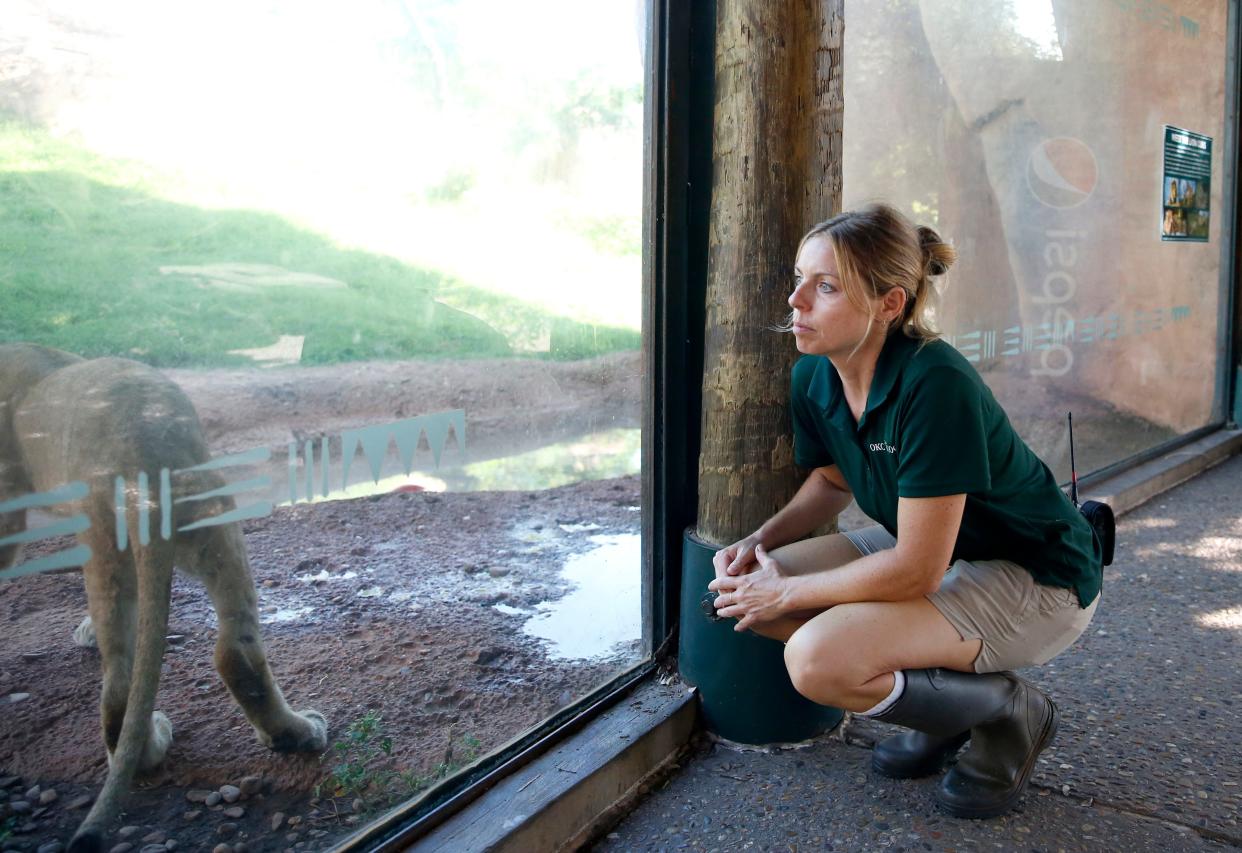
Like any child, baby lions, tigers and bears take a village to raise.
At the Oklahoma City Zoo, caretakers that have the honor of working with the cutest residents have plenty to do behind the enclosure's glass to care for these animals.
And oftentimes, caretakers will work with these animals as they grow up and form close connections with the animals over their lifetimes.
“Some of them are with us for their whole life cycle, so we get to know them very well,” said Kris Flickenger, a pachyderm animal caretaker. "We form some strong relationships."
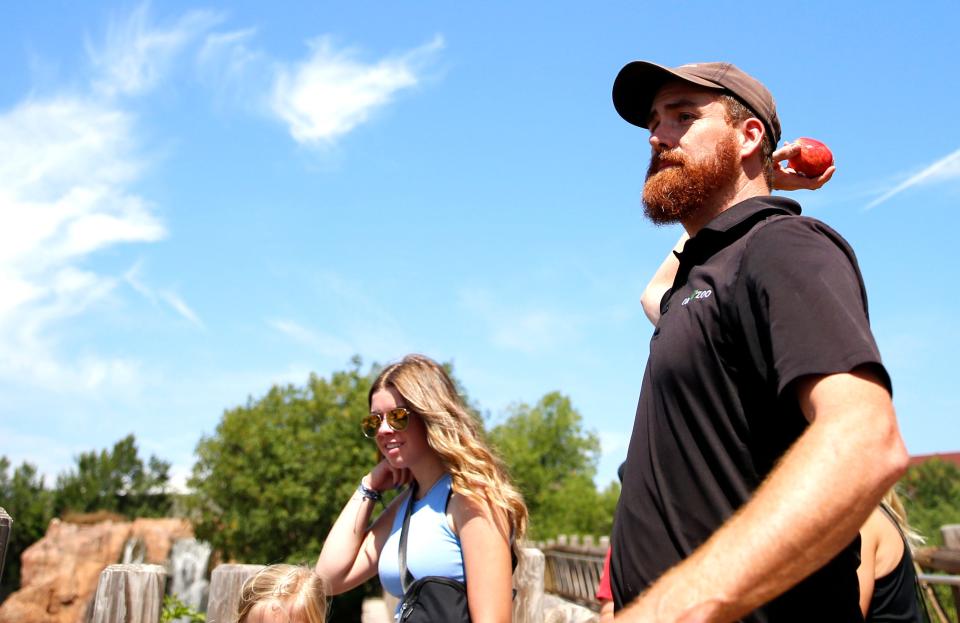
How do zookeepers work with pregnant animals?
The procedure for a pregnant animal and its birthing process is different based on each animal.
While natural breeding can happen within the zoo, the Oklahoma City Zoo also participates in a national breeding program with the Association of Zoos and Aquariums called the Species Survival Plan program. SSP is a responsible breeding program that matches animals based on genetics to make sure their lineage is viable and healthy. It intends to ensure these animals’ genetic pool is strong and prevent species loss.
Once caretakers know breeding has occurred, they will try to predict a birthing window. Based on the animal, they can be more or less accurate about when the mother might give birth.
Lions spend most of their life with one another in their pack, said Jennifer Jeffords, a senior animal caretaker part of the carnivore team. So it can be harder to predict when copulation might have occurred.
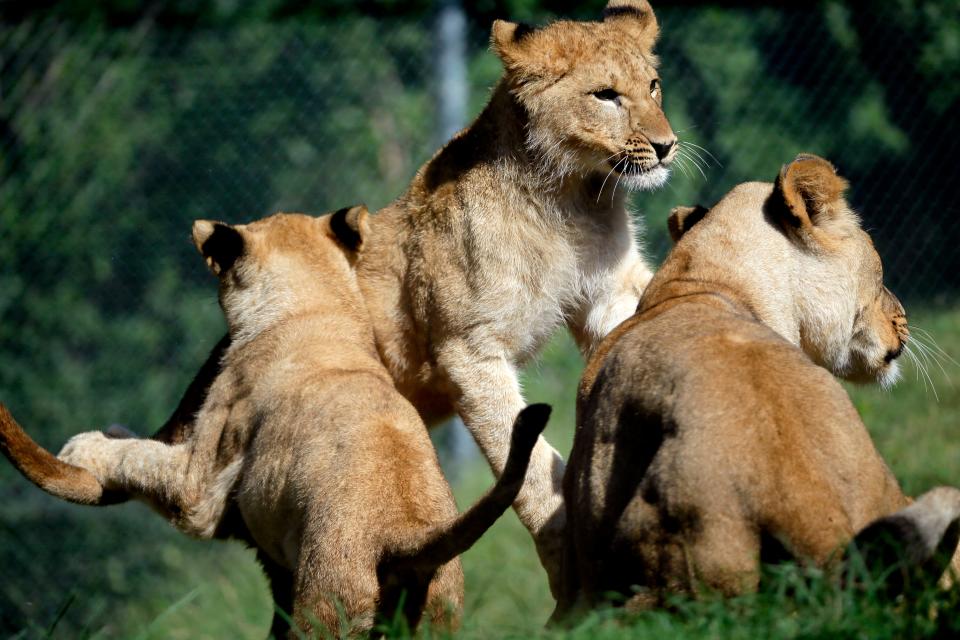
For the lioness Dunia, caretakers immediately set up a separate den to make her comfortable away from the rest of the pride when they first suspected she was pregnant.
Tigers, however, do not spend much time together, and at the Oklahoma City Zoo, they are only together at specific times so caretakers can more easily and accurately predict time of copulation.
Elephants uniquely have one of the longest gestation periods, so caretakers have a large window to make preparations for the mother.
More: Baby boom continues at OKC Zoo with birth of okapi calf
How do zookeepers foster mother-child relationships?
Once an animal gives birth, caretakers do not touch animals for a couple of weeks so the babies can spend some time with their mothers alone.
Kyla Flatley, a senior animal caretaker also part of the carnivore team, said when it came to the Sumatran tiger Lola and her twins, Bob and Luna, they were very lucky that Lola already had started raising them.
"Our department's been super fortunate to have great, caring mothers that actually rear their young, so we don't have to do much of neonate care and teaching them how to be a tiger; Mom does all that by herself," Flatley said.
Flickenger, a pachyderm animal caretaker, said when training young elephants, they rely on the other elephants to teach the calf basic skills. For example, trunks can be very awkward for newborn calves to learn how to use, so they often imitate other elephants, picking up food and practicing how to use their appendage.
After a couple of weeks have passed, caretakers perform new age exams. Babies will get their vaccinations, they will be sexed and checked if they're in healthy condition, and frequent weights are taken all to make sure that the baby animals are growing properly.
Just like humans, baby animals have to get used to doctor appointments
The caretakers said that their first priority with baby animals is to train medical behaviors and prepare them for their health care procedures.
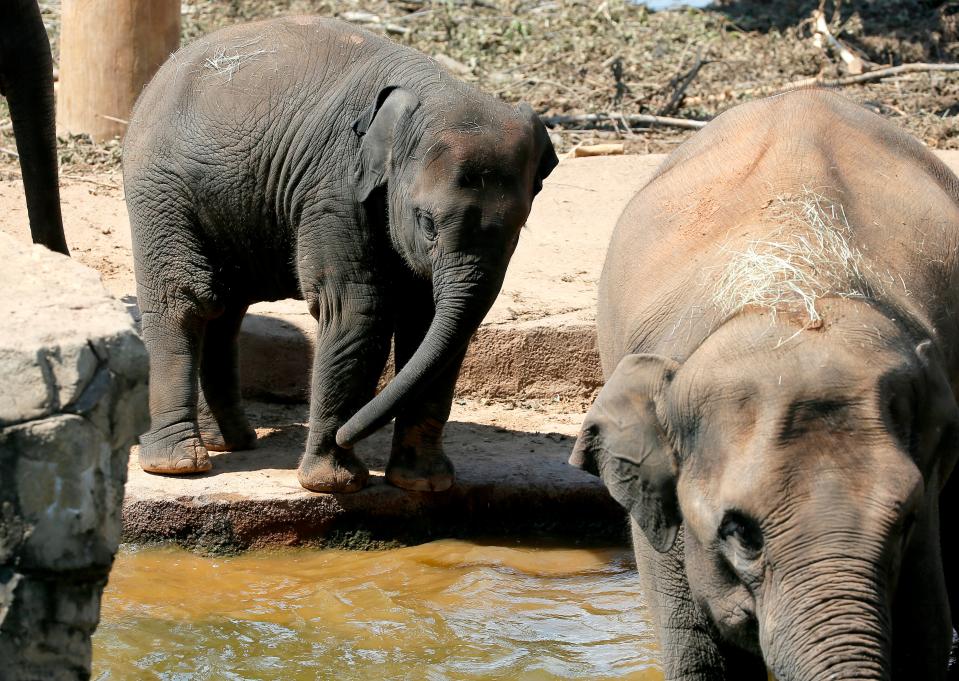
“We like to create a relationship with the cat to where they want to come up and participate with us and learn from us and learn medical behaviors,” Flatley said. “That really helps them gain comfortability in participating in their own health care, which is super vital for them.”
Most baby animals are trained so caretakers can perform vaccinations through voluntary hand injections.
Last year, lioness Dunia gave birth to four lion cubs, the first lion litter in 15 years. Jeffords explained that since it's been such a long time, they looked at past birth plans and revised procedures for the present day. One modern revision they've added to all animals' health care plans is a COVID-19 vaccination.
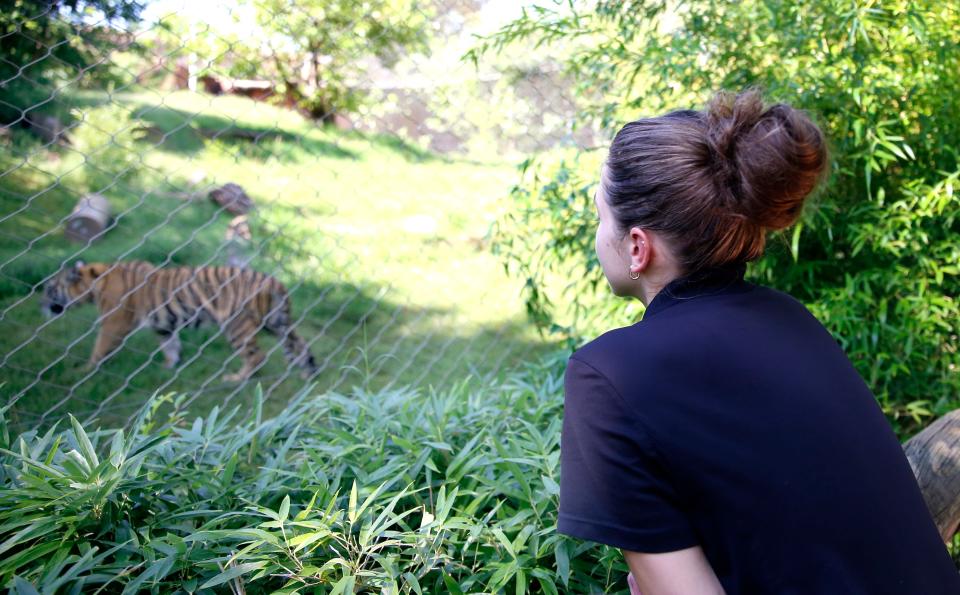
'It's all about relationship building'
The Oklahoma City Zoo works with all of its animals through protected contact. This means that they never share a space with their animals and handle them through mesh or barriers. They also never force animals to do anything that isn’t of their free will. This means animals are voluntarily participating in health care procedures and training.
“It's all about relationship building. … It’s also very cognitively stimulating, which is tremendous for their care,” Flickenger said.
By training animals with positive reinforcement to be comfortable with health care procedures, caretakers can save animals' lives.
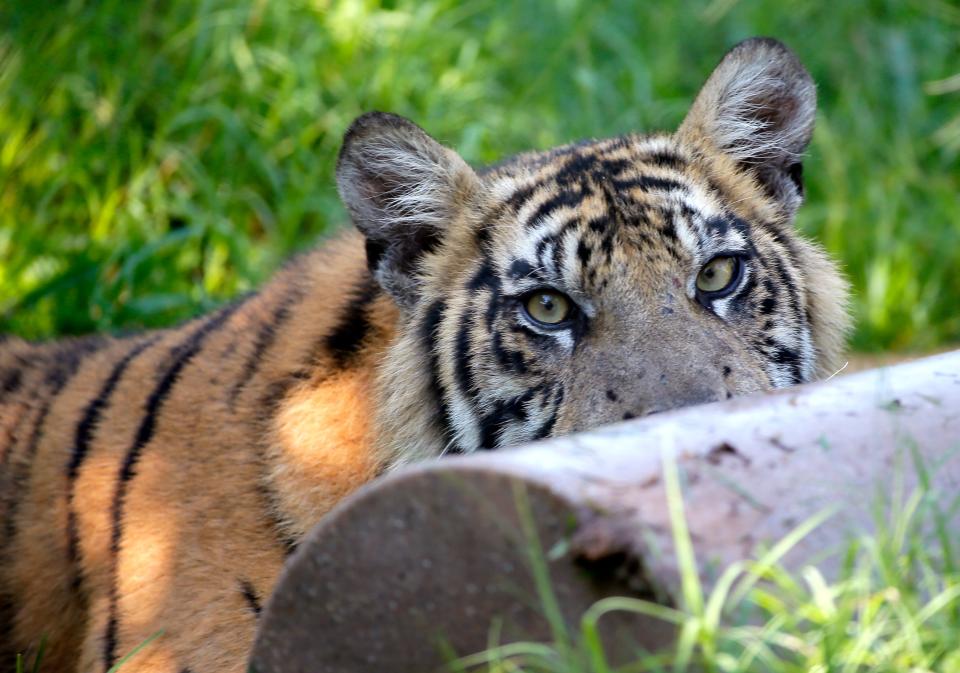
Flatley described an incident where Bob, one of the Sumatran tiger twins, ingested a piece of string. Caretakers were able to hand-inject him with anesthesia so he could be brought to the hospital and have it safely removed.
Celebrating zoo babies boosts conservation education, as well
The caretakers said the community response always has been very positive when new babies are born at the zoo.
Through these engagement events, caretakers say they have a great opportunity to get people excited about these animals but also educated about conservation.
“Our tigers are important ambassadors for their wild counterparts and helping people to understand the threats these incredible big cats are facing,” said Tyler Boyd, curator of carnivores, in a news release. "By raising awareness through this event and conservation education, we hope to inspire people to take action to help safeguard tiger populations and their habitat.”
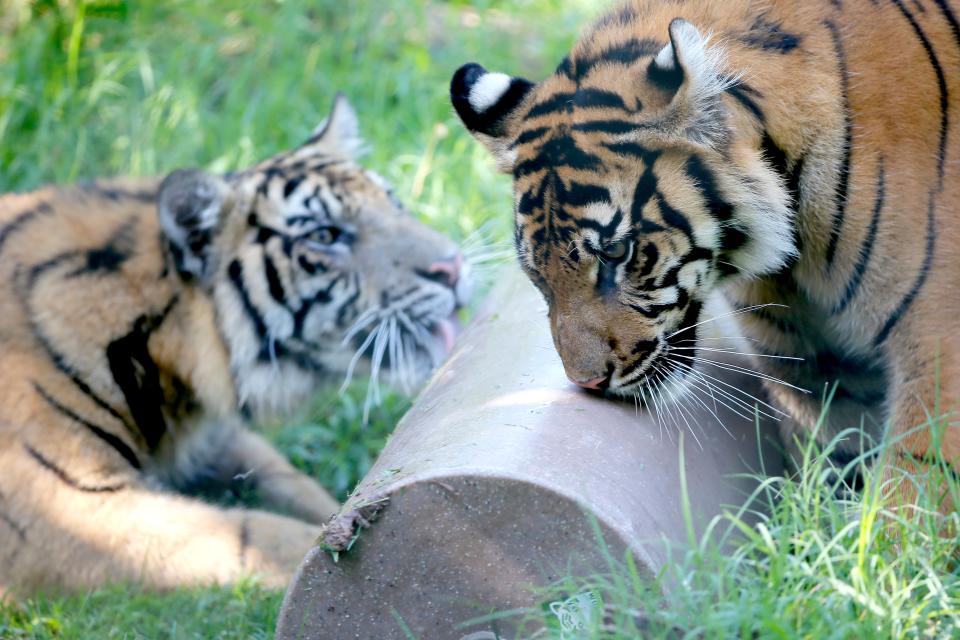
The public often has the opportunity to engage with the animals through naming polls and engagement events, such as the International Tiger Day celebration on July 29, where the public will get to celebrate Sumatran tiger Lola and her cubs Bob and Luna.
The celebration will be from 10 a.m. to 1 p.m. July 29 throughout the Zoo’s Cat Forest habitat. Also, guests can meet and take pictures with Daniel Tiger at the Zoo from 9 a.m. to 4:45 p.m.
More: OKC Zoo's new baby chimp makes public debut
This article originally appeared on Oklahoman: Meet all the newest babies at Oklahoma City Zoo and their caretakers

